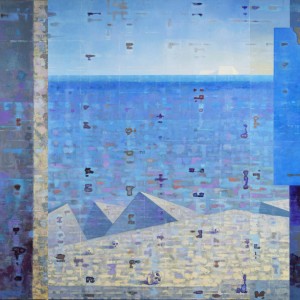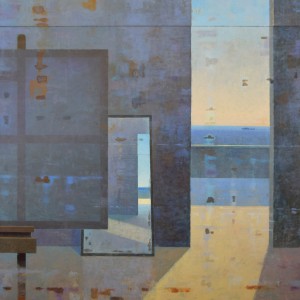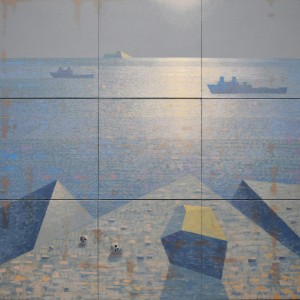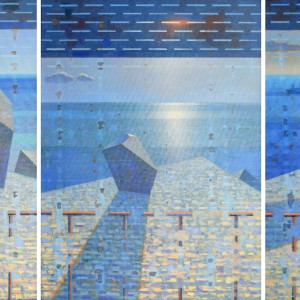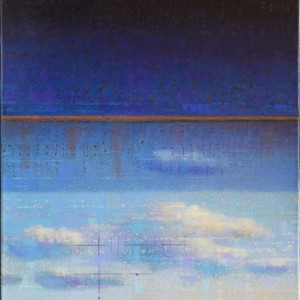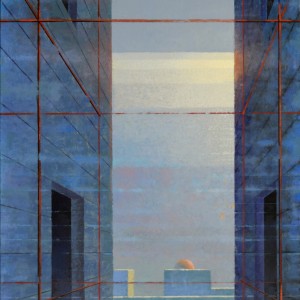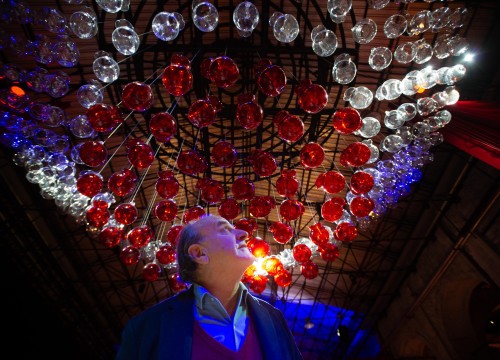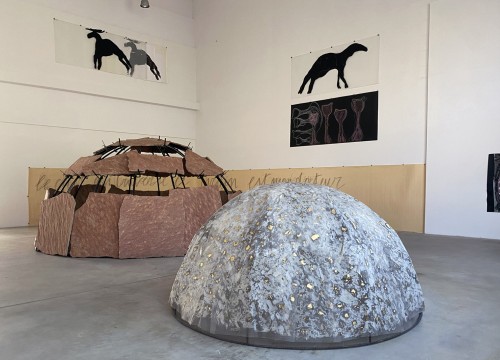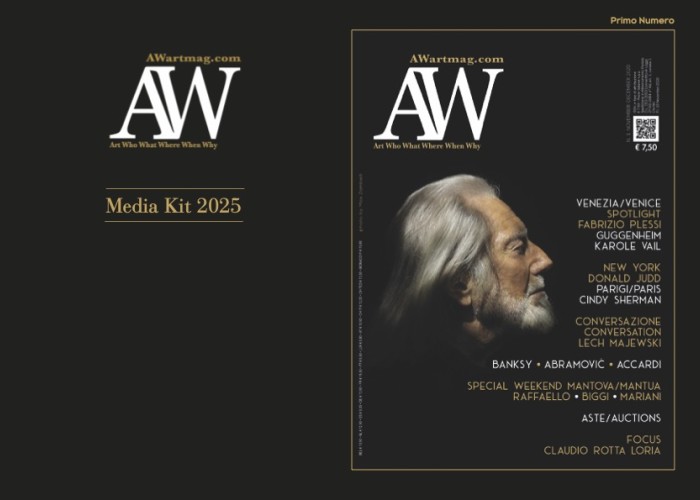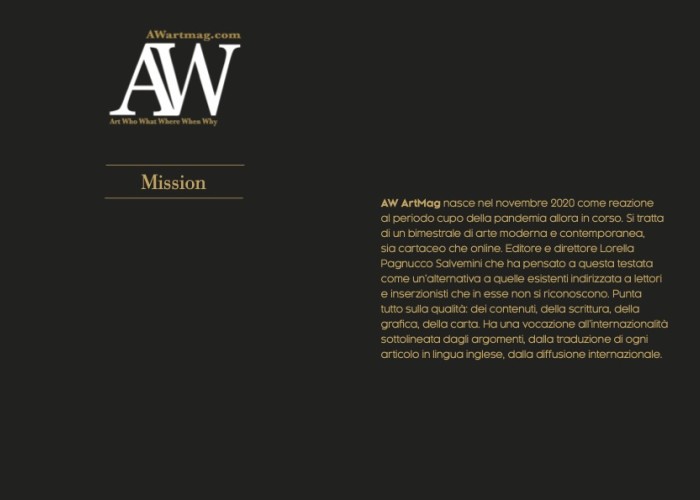About twenty unpublished works that have the Mediterranean routes as theme on view
The Mediterranean as a space of a story that has been going on for centuries, that has created and contaminated our culture, with the migrations that have made us become what we are. This is the background of Giuseppe Modica’s exhibition “Rotte mediterranee e visione circolare” (“Mediterranean routes and circular vision”), in the spaces of the Hendrik Christian Andersen House Museum, curated by Maria Giuseppina Di Monte and Gabriele Simongini.
Originally from Mazara del Vallo, the artist has lived and worked in the capital for over 30 years. Of international standing, he is among the main exponents of a new metaphysics that focuses on the Mediterranean: Sicily, with its culture, its history, its central position in the Mare Nostrum, as it was called at the time of ancient Rome. And this is not only because it is what the Empire faced, but it represented the crossroads of interconnections with other conquered territories. It is to those trade routes, but above all cultural, that the artist is interested. With his works he reflects on the mass movements that have always followed from the times of the Phoenicians, the Greeks, the Arabs, to those of our tragic timeliness.
"BLUE IS THE COLOR OF BREATH AND FREEDOM AND THE VASTNESS OF THE FIRMAMENT"
The exhibition offers about twenty oils on canvas, almost all unpublished, made in recent years. As Modica himself recounts, the Mediterranean is not intended as a mythical Arcadia but as a place marked by many vicissitudes. The prevailing color is blue, the color of the sea, but also “the color of the atmosphere and distance, the color of spirituality and contemplation. And then with blue all the other colors turn on, like the reds and ocher that are the vital energy of light. Blue is a necessary counterpoint to light. It is the color of breath, freedom and vastness of the firmament”.
THE SHORES OF THE ISLAND ARE, IN THESE LUMINOUS CANVASES, THE LANDING AT THE END OF A DRAMATIC WATER TUNNEL
The artist abstains from an evaluation of recent exodus, takes note of it as something inexorable, that has always been and will still be, because people move, contaminate. The sea thus becomes a great highway, fascinating as a whole, but full of tragic episodes of death and despair. The shores of the island are in these luminous canvases, a sort of landing place that is reached as at the end of a dramatic water tunnel; they also become subtly disturbing in the allusion to the drama of too many lives broken by the fates never fulfilled. The calm is only apparent. Modica represents the sea, not the tragedies that are consumed there, but forces the observer to reckon with our geography and with the links with refugees through the unspoken: the contradiction and indifference with which, nowadays, these places are mainly proposed as tourist destinations, ignoring the continuous slaughter that is perpetuated there.
EVERYTHING IN HIS WORKS EXUDES A RAREFIED, ENIGMATIC AND SUSPENDED ATMOSPHERE
Through his brush, the tragedy becomes lyric, poetry. He dries to the maximum language and forms, stripping them. He relies on light and shadows, perspectives, geometries. Before our eyes, a sequence of bare rooms with some recurring objects: paintings, mirrors, easels, maps, skulls lying on the sand to make even more disturbing the allusion to the victims of shipwrecks. Everything in these works exudes a rarefied, enigmatic and suspended atmosphere. My thoughts turn to the sultry hours of the island’s midday, with windows and terraces wide open over the seascape to catch the breeze: the Sicily of yesterday, of today, of always.


